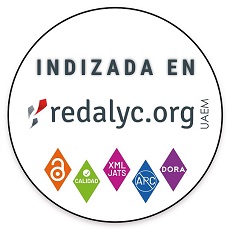Publicado
Using an Anchor to Improve Linear Predictions with Application to Predicting Disease Progression
Usando un anclaje para mejorar predicciones lineales con aplicación a la predicción de progresión de enfermedad
DOI:
https://doi.org/10.15446/rce.v41n2.68535Palabras clave:
Anchor, Amyotrophic lateral sclerosis, Biased regression, Linear models, Ordinary least squares (en)Anclaje, esclerosis lateral amiotrófica, modelos lineales, mínimos cuadrados ordinarios, regresión sesgada (es)
Descargas
assumed data to reduce prediction error. This assumed data, referred to as the anchor, is treated as an additional data-point generated at either the beginning or end of the process. The response value of the anchor is equal to an intelligently selected value of the response (such as the upper bound, lower bound, or 99th percentile of the response, as appropriate). The anchor reduces the variance of prediction at the cost of a possible increase in prediction bias, resulting in a potentially reduced overall mean-square prediction error. This can be extremely eective when few individual data-points are available, allowing one to make linear predictions using as little as a single observed data-point. We develop the mathematics showing the conditions under which an anchor can improve predictions, and also demonstrate using this approach to reduce prediction error when modelling the disease progression of patients with amyotrophic lateral sclerosis.
Referencias
Amemiya, T. (1973), 'Regression analysis when the dependent variable is truncated normal', Econometrica 41(6), 997-1016.
Armon, C., Graves, M., Moses, D., Forté, D., Sepulveda, L., Darby, S. & Smith, R. (2000), 'Linear estimates of disease progression predict survival in patients with amyotrophic lateral sclerosis', Muscle & Nerve 23(6), 874-882.
Atassi, N., Berry, J., Shui, A., Zach, N., Sherman, A., Sinani, E., Walker, J.,
Katsovskiy, I., Schoenfeld, D., Cudkowicz, M. & Leitner, M. (2014), 'The
pro-act database: design, initial analyses, and predictive features', Neurology 83(19), 1719-1725.
Caruana, R., Lou, Y., Gehrke, J., Koch, P., Sturm, M. & Elhadad, N. (2015),
Intelligible models for healthcare: Predicting pneumonia risk and hospital
-day readmission, in 'Proceedings of the 21th ACM SIGKDD International
Conference on Knowledge Discovery and Data Mining', ACM, pp. 1721-1730.
Cedarbaum, J., Stambler, N., Malta, E., Fuller, C., Hilt, D., Thurmond, B. &
Nakanishi, A. (1999), 'The alsfrs-r: a revised als functional rating scale that
incorporates assessments of respiratory function', Journal of the Neurological Sciences 169(1), 13-21.
Gelman, A. (2014), Bayesian data analysis, tercera edn, CRC Press, Boca Raton, FL.
Hoerl, A. & Kennard, R. (2000), 'Ridge regression: Biased estimation for
nonorthogonal problems', Technometrics 42(1), 80-86.
Karanevich, A., Statland, J., Gajewski, B. & He, J. (2018), 'Using an onsetanchored bayesian hierarchical model to improve predictions for amyotrophic lateral sclerosis disease progression', BMC Medical Research Methodology 18(1), 19.
Kutner, M., Nachtsheim, C. & Neter, J. (2004), Applied linear regression models, cuarta edn, McGraw-Hill, New York.
Lesaffre, E., Rizopoulos, D. & Tsonaka, R. (2007), 'The logistic transform for
bounded outcome scores', Biostatistics 8(1), 72-85.
Magnus, T., Beck, M., Giess, R., Puls, I., Naumann, M. & Toyka, K. (2002), 'Disease progression in amyotrophic lateral sclerosis: Predictors of survival',
Muscle & Nerve 25(5), 709-714.
Morris, C. & Lysy, M. (2012), 'Shrinkage estimation in multilevel normal models', Statistical Science 27(1), 115-134.
Cómo citar
APA
ACM
ACS
ABNT
Chicago
Harvard
IEEE
MLA
Turabian
Vancouver
Descargar cita
CrossRef Cited-by
1. Divya Ramamoorthy, Kristen Severson, Soumya Ghosh, Karen Sachs, Emily G. Baxi, Alyssa N. Coyne, Elizabeth Mosmiller, Lindsey Hayes, Aianna Cerezo, Omar Ahmad, Promit Roy, Steven Zeiler, John W. Krakauer, Jonathan Li, Aneesh Donde, Nhan Huynh, Miriam Adam, Brook T. Wassie, Alex Lenail, Natasha Leanna Patel-Murray, Yogindra Raghav, Karen Sachs, Velina Kozareva, Stanislav Tsitkov, Tobias Ehrenberger, Julia A. Kaye, Leandro Lima, Stacia Wyman, Edward Vertudes, Naufa Amirani, Krishna Raja, Reuben Thomas, Ryan G. Lim, Ricardo Miramontes, Jie Wu, Vineet Vaibhav, Andrea Matlock, Vidya Venkatraman, Ronald Holewenski, Niveda Sundararaman, Rakhi Pandey, Danica-Mae Manalo, Aaron Frank, Loren Ornelas, Lindsey Panther, Emilda Gomez, Erick Galvez, Daniel Perez, Imara Meepe, Susan Lei, Louis Pinedo, Chunyan Liu, Ruby Moran, Dhruv Sareen, Barry Landin, Carla Agurto, Guillermo Cecchi, Raquel Norel, Sara Thrower, Sarah Luppino, Alanna Farrar, Lindsay Pothier, Hong Yu, Ervin Sinani, Prasha Vigneswaran, Alexander V. Sherman, S. Michelle Farr, Berhan Mandefro, Hannah Trost, Maria G. Banuelos, Veronica Garcia, Michael Workman, Richie Ho, Robert Baloh, Jennifer Roggenbuck, Matthew B. Harms, Carolyn Prina, Sarah Heintzman, Stephen Kolb, Jennifer Stocksdale, Keona Wang, Todd Morgan, Daragh Heitzman, Arish Jamil, Jennifer Jockel-Balsarotti, Elizabeth Karanja, Jesse Markway, Molly McCallum, Tim Miller, Ben Joslin, Deniz Alibazoglu, Senda Ajroud-Driss, Jay C. Beavers, Mary Bellard, Elizabeth Bruce, Nicholas Maragakis, Merit E. Cudkowicz, James Berry, Terri Thompson, Steven Finkbeiner, Leslie M. Thompson, Jennifer E. Van Eyk, Clive N. Svendsen, Jeffrey D. Rothstein, Jonathan D. Glass, Christina N. Fournier, Alexander Sherman, Christian Lunetta, David Walk, Ghazala Hayat, James Wymer, Kelly Gwathmey, Nicholas Olney, Senda Ajroud-Driss, Terry Heiman-Patterson, Ximena Arcila-Londono, Kenneth Faulconer, Ervin Sanani, Alex Berger, Julia Mirochnick, Todd M. Herrington, James D. Berry, Kenney Ng, Ernest Fraenkel. (2022). Identifying patterns in amyotrophic lateral sclerosis progression from sparse longitudinal data. Nature Computational Science, 2(9), p.605. https://doi.org/10.1038/s43588-022-00299-w.
Dimensions
PlumX
Visitas a la página del resumen del artículo
Descargas
Licencia
Derechos de autor 2018 Revista Colombiana de Estadística

Esta obra está bajo una licencia internacional Creative Commons Atribución 4.0.
- Los autores/as conservarán sus derechos de autor y garantizarán a la revista el derecho de primera publicación de su obra, el cuál estará simultáneamente sujeto a la Licencia de reconocimiento de Creative Commons (CC Atribución 4.0) que permite a terceros compartir la obra siempre que se indique su autor y su primera publicación esta revista.
- Los autores/as podrán adoptar otros acuerdos de licencia no exclusiva de distribución de la versión de la obra publicada (p. ej.: depositarla en un archivo telemático institucional o publicarla en un volumen monográfico) siempre que se indique la publicación inicial en esta revista.
- Se permite y recomienda a los autores/as difundir su obra a través de Internet (p. ej.: en archivos telemáticos institucionales o en su página web) antes y durante el proceso de envío, lo cual puede producir intercambios interesantes y aumentar las citas de la obra publicada. (Véase El efecto del acceso abierto).

















